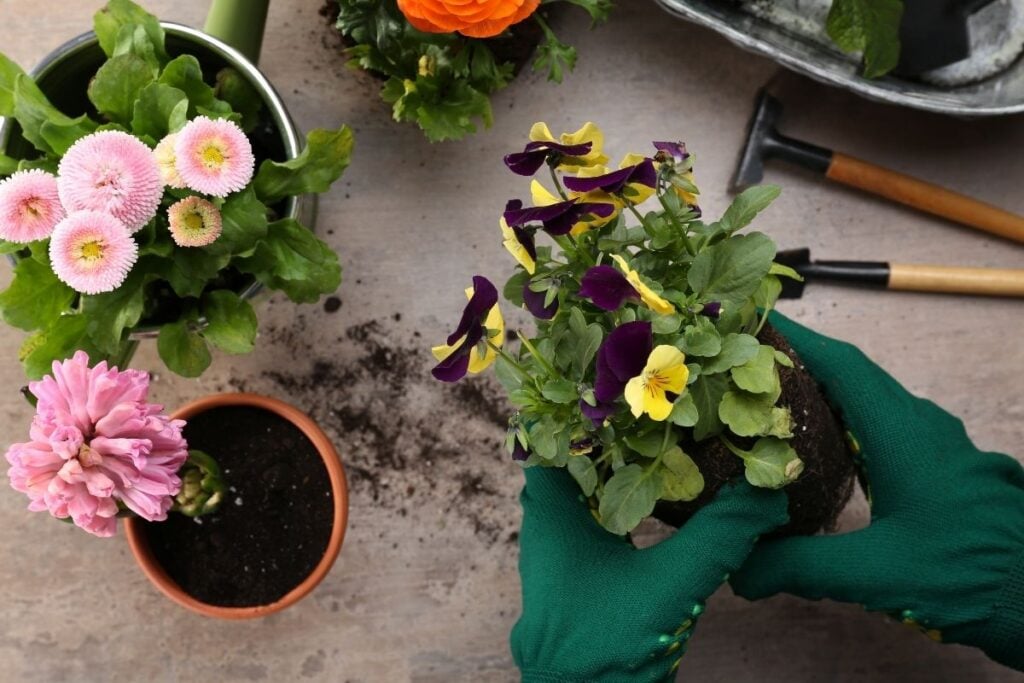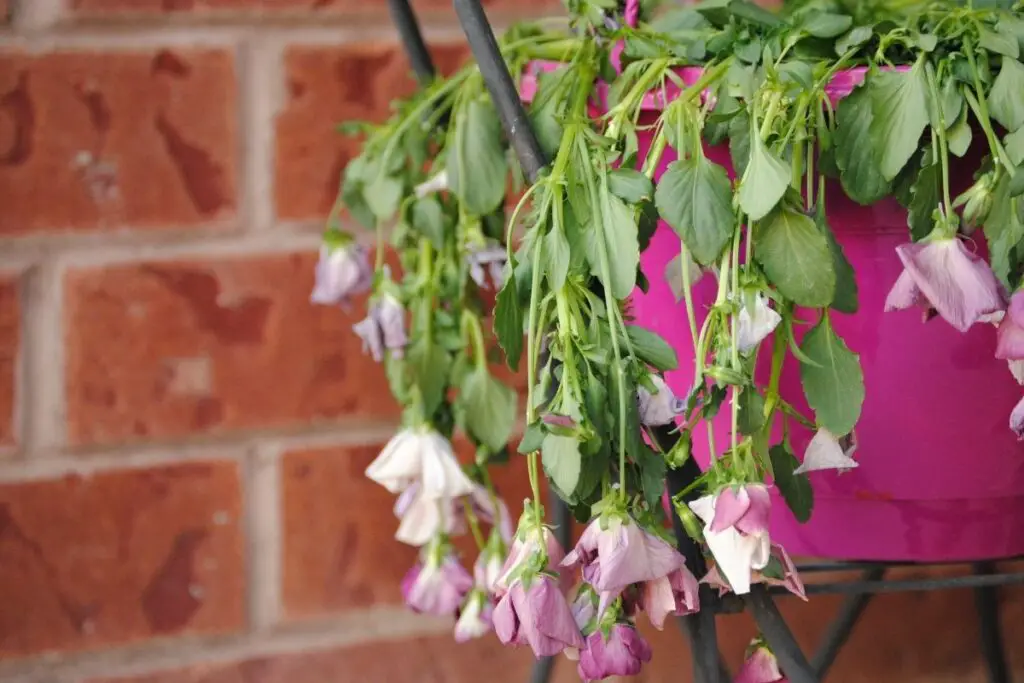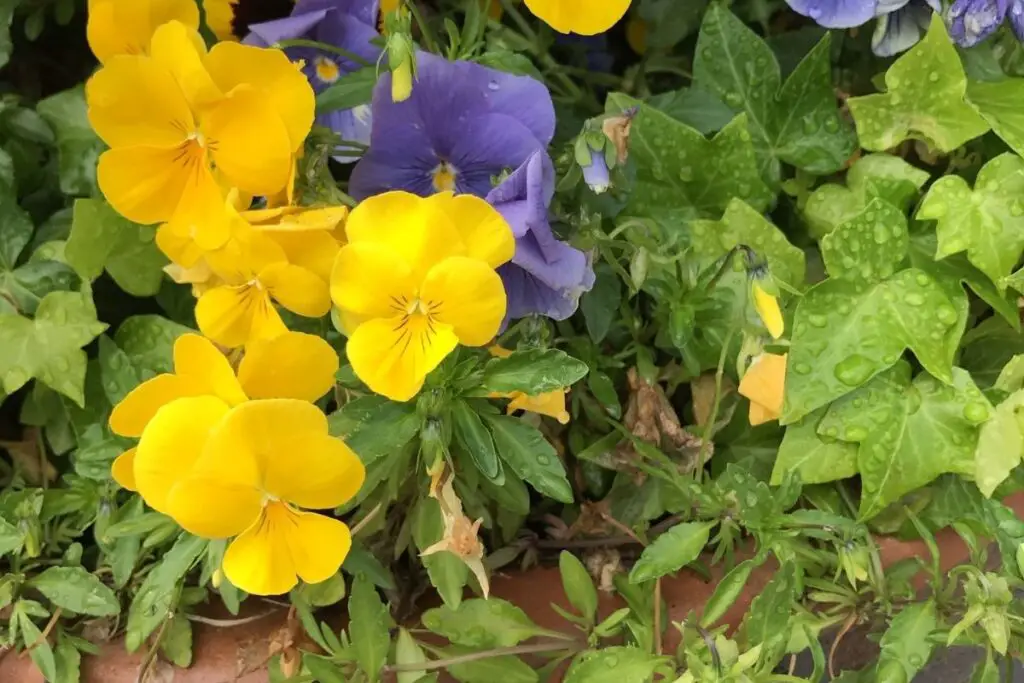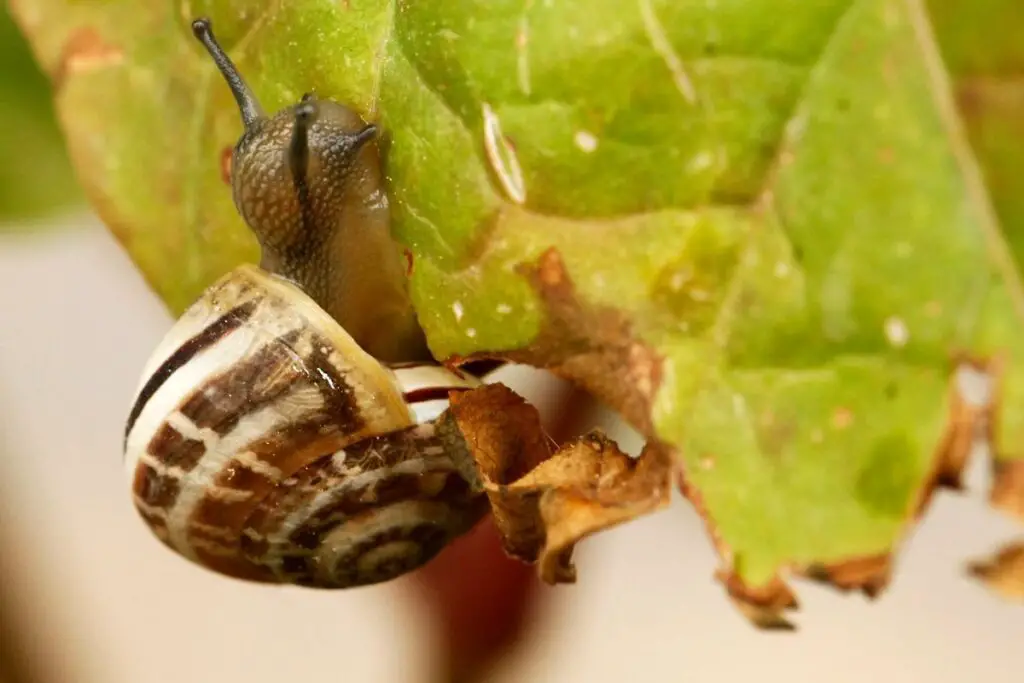The pansy is an annual or short-lived perennial and grows about 15 to 30 cm tall. Pansies look beautiful in the gardens, but sometimes they can be finicky. It can become challenging to handle them, and they can die due to poor care and attention.
If you are struggling to keep your pansy alive, then this article is for you. We will discuss everything about reviving a dying pansy, their possible problems, and solutions in detail.
Too much heat, watering problems, poor soil, nutrient deficiencies, and pests are common problems leading to wilting pansies. To revive your dying pansy, remove any wilted parts, fix your watering schedule, provide adequate nutrients and spray some neem oil to eliminate possible pests.
Here we will discuss the different kinds of problems pansies face and how to deal with these problems in a proper way.

Signs of dying pansies
Let’s check out all the signs that can lead to dying pansies if you don’t do anything about them.
- Wilting of leaves
- Foliage turning yellow
- Brown tips on leaves
- Brown, burnt-looking spots on top of the leaves
- Droopy leaves
- Dropping of leaves
- Leggy growth
- Root rot
- Slow growth
Now we will discuss each problem in detail.
Wilting of leaves
Wilting is the loss of rigidity of leaves because of which it becomes difficult for them to stand firm.
When the soil runs too low on water, the plant loses its turgidity and begins to wilt. Pansies can wilt due to overwatering and direct sunlight.
Also read: Why Do My Pansies Keep Dying? (Possible Causes+How To Fix)
Yellowing of leaves
Poor drainage or improper watering is the reason behind yellow leaves.
If the soil of your pansies is overly wet, roots will not be able to breathe, and the plant will suffocate, causing yellow foliage in pansies.
Also read: Why Are My Pansy Leaves Turning Yellow? (Causes+How To Fix)
Brown tips on leaves
Brown edges on leaves can happen in pansies if you apply too much fertilizer on them.
Underwatering can also cause brown tips on the leaves of pansies. Because of less water, the sides of the leaves in pansies can also turn brown.
Also read: Why Are My Pansy Leaves Turning Brown? (Causes+How To Fix)
Brown, burnt-looking spots on the top of leaves
If you notice burnt-looking spots on the top of the leaves in pansies, it is mainly because of too much sunlight.
Exposing your pansies to direct sunlight for a long time can burn the leaves of your plant.
Looking for gardening supplies? We have tested 100's of products before recommending them to you guys. Check out our best pick below:
| Image | Gardening Supplies | Best Price? |
|---|---|---|
 Top
Top Top
Top | Raised Garden Bed Kit | Check On Amazon |
 | XLUX Soil Moisture Meter, Plant Water Monitor, Soil Hygrometer Sensor for Gardening, Farming, Indoor and Outdoor Plants, No Batteries Required | No Results |
 Top
Top Top
Top | 82 Pcs Garden Tools Set and Extra Succulent Tools Set | Check On Amazon |
 | Joeys Garden Expandable Garden Hose with 8 Function Hose Nozzle, Lightweight Anti-Kink Flexible Garden Hoses, Extra Strength Fabric with Double Latex Core, (50 FT, Black) | No Results |
 Top
Top Top
Top | Dual Chamber Compost Tumbler | Check On Amazon |
 Top
Top Top
Top | Sunnyglade Plant Stakes | Check On Amazon |
 Top
Top Top
Top | Organic Cold Pressed Neem Seed Oil | Check On Amazon |
 Top
Top Top
Top | Mighty Mint Gallon :-Insect and Pest Control Peppermint Oil | Check On Amazon |
 Top
Top Top
Top | Scotts DiseaseEx Lawn Fungicide | Check On Amazon |
 Top
Top Top
Top | Jacks Classic 20-20-20 All Purpose Fertilizer | Check On Amazon |
 Top
Top Top
Top | 30,000 Seeds Pollinator Attracting Wildflower Mixture | Check On Amazon |
 Top
Top Top
Top | Survival Vegetable Seeds Garden Kit-Over 16,000 Seeds | Check On Amazon |
Droopy leaves
Your pansies can droop because of too much heat, lack of air circulation, root rot, nutrient deficiencies, and watering problems. You can avoid this problem with proper planning.
Also read: Why Is My Pansy Drooping? (Possible Problems+How To Fix)
Dropping of leaves
Pansies leaves begin to drop because of improper care or poor growing conditions. Either too much or too little watering can cause the dropping of leaves in pansies.
Leggy growth
Leggy growth happens in pansies because of low light or too much nitrogen. Due to leggy growth, pansies will produce fewer flowers, becoming relatively weak and fragile.
Also read: Why Are My Pansies Leggy? (+How To Fix A Leggy Plant)
Root rot
This is a disease that affects the roots of a plant. Root rot is primarily caused by poor drainage of soil and overwatering.
Due to root rot, pansies may suffer from severe damage, and it can even kill the entire plant.
Slow growth
Slow growth in pansies is caused due to lack of water, imbalance of soil nutrients, excess light, or no light.
Slow growth can often lead to stunted growth. There are various ways to solve all these problems.
If your pansies are showing such symptoms of dying, you should take care of them in the appropriate manner.
Also read: How To Make Pansies Bloom More?
Causes of dying pansies

Now that you know what a dying pansy might look like, let’s look at the causes.
- Too much heat
- Overwatering and under watering
- Poor soil
- Lack of nutrients
- Improper sunlight
- Lack of pruning
- Lack of growing space
- Pests
- Fungal diseases
Now, let us discuss each cause in detail, along with their solutions.
Too much heat
Pansies grow well during the spring and fall months when temperatures remain between 45-65°F.
High temperatures cause pansies to become leggy and stop blooming.
Pansies cannot tolerate excessive heat and humidity.
Heat hampers the pansies’ growth and causes moisture loss from the plant’s foliage. Rapid moisture loss turns the leaves’ edges brown.
As dry summers are rough on pansies, proper care is required for them. They need special attention and care during such dry conditions.
Solution
You can solve this problem by following these:
- Exposure to the intense sunlight can be too much for pansies which can cause yellow-white “burn” on the leaves. A good covering of leaves will protect the pansies from sunburn.
- Location can play a significant role. You can replace or transplant your pansies to shaded locations to avoid excess sunlight. This will make your pansies survive and bloom even in high temperatures.
- Fertilize your pansies in hot temperatures to encourage strong growth in pansies.
- It would help to have a proper watering schedule to maintain the growth of your pansies. Maintain the moisture level of the soil to prevent pansies from dying.
- Mulch the soil surface to keep it moisturized.
Also read: How To Keep Pansies Alive In Summer?
Watering problems
Pansies prefer slightly moist soil, but the soil should not get soggy. Giving the pansies at least an inch of water every week will help the soil remain soil yet not soggy.
If you don’t water your pansies sufficiently, they will get dehydrated due to insufficient moisture.
On the other hand, when pansies are burdened with excess water, it can cause edema (abnormal water retention in plants).
Too much water can cause root rot that will decay the roots and might ultimately kill your pansies.
Yellow and drooping leaves can be the signs of both under-watering and overwatering. Improper watering could be the reason behind your dying pansies.
Solution
In case of overwatering:
- You need to analyze if your pansies need water. Dip your finger upto 2 inches into the soil and check the tip. If the soil sticks to your finger, the soil has enough moisture, and you should wait.
- Transplant your pansies to a sunny spot for proper sunlight. But move your pansies to a shady area if it is getting a lot of direct sunlight.
- You have to create additional space between roots to allow proper oxygen flow. Remove any dead or dying roots and keep only the healthy roots.
- Pruning can help the pansies recover their damaged roots as it lightens the strain on the root system.
- Do not fertilize the plant if it is still recovering from root damage.
In case of under watering:
- Avoid excess heat or warm drafts as it can significantly increase evaporation from the soil and transpiration of your plants. This may result in the soil drying within a day or two.
- Check the soil every few days to monitor when your pansies need water.
- Make sure to soak water in the soil thoroughly when you water your pansies and let the excess water drain. Sometimes water can run right through dry soil without being absorbed.
- You should choose your soil carefully. Soil with little organic material may drain too well and dry out quickly.
You can revive your pansies from dying if they are overwatered or underwatered by following all these steps.
Also read: How Much Water Does A Pansy Need? (Pansy Water Requirements)
Poor soil
Soil structure can affect the ability of the roots to grow and supply the leaves with water and minerals.
If your pansies are not growing well and the growth is stunted even after watering it properly and providing adequate sunshine, it indicates that there might be some problem with the soil composition.
Due to wrong soil composition, pansies can experience poor drainage, which can cause root rot.
Poor soil can make the leaves of pansies wilt and fall.
Solution
To avoid this problem, you need to follow all the instructions which are given below:
- Pansies need pH levels between 5.0 and 6.0 to thrive. You will notice stunted growth, and even death of your pansies if the pH starts turning alkaline.
- You should add organic matter to improve the soil. It makes the soil drain better, and it also helps in retaining more moisture and nutrients.
- You should test the soil from the extension service to include new organic amendments to increase nutrients.
- You should mulch the soil surface of your pansies. As the mulch decomposes, it will supplement organic matter to the soil to increase fertility.
Also read: What Type Of Soil Is Best For Growing Pansies? (+Best Soil Mix)
Lack of nutrients
Nutrients in the soil create a significant impact on pansies. If the pansies don’t get enough nutrients, they will become weak.
Yellow and droopy leaves are the symptoms of nutrient deficiencies.
An essential nutrient for pansies is nitrogen. Nitrogen deficiencies can lead to stunt growth in pansies.
Solution
- Add compost to the soil to provide nutrients to your pansies.
- Apply a balanced fertilizer with an NPK ratio of 10:10:10.
- Fertilize the pansies at least once a month to give them the required fertilizers.
- When the pansies start to bloom, you can switch the fertilizers that’s high in phosphorous. A 10:15:10 fertilizer will be suitable for this issue.
Also read: Do Pansies Need Fertilizer? (What Type, How Much & More)
Improper sunlight

Pansies are sun-loving plants, but they may die if you provide them with direct sunlight for an extended period.
If your pansies are not getting the appropriate sunlight they need, the plants will get harmed, and lack of light will stunt the pansies’ growth.
Poor sunlight can also cause root rot to them.
A proper and adequate amount of sunlight is vital for your pansies’ overall growth.
Solution
- If your pansies are getting excess sunlight, use a plastic sheet or curtain to cover them.
- If your pansies are not getting enough sunlight, you should transplant them to a brighter location of the garden and house.
- If there are any blockages, remove so that the pansies get enough light.
Also read: How Much Sun Do Pansies Need? (Pansies Light Requirements)Do Pansies Need Fertilizer? (What Type, How Much & More)
Lack of pruning
Your pansies can stop blooming due to a lack of pruning.
Prune the excess foliage that you see on your pansies. Or else, the plants won’t be able to focus on new growth.
It would be best if you pruned the pansies once they had grown enough foliage. Otherwise, pansies will have poor growth.
Pruning encourages new growth in the plant, and it also protects the plant from further damage caused by pests and other animals.
Pruning will also help pansies to maintain their natural shape and size.
Solution
- You should check the pansies and prune them weekly if required.
- Avoid pruning more than 1/3rd of the your pansies at once. It can damage the plant.
- Prune the flowers that are diseased, dead, and that have poor growth.
Timely pruning your pansies is vital for their survival.
Lack of space
Plants require space to spread their roots and stems. Without enough space, pansies will experience nutrient deficiencies, poor blooms, moisture issues, pests, and diseases.
The pansies can ultimately die if you don’t make enough space for them.
Solution
It would be best if you spaced out the pansies at least 5-10 inches apart to allow them the space for healthy growth without getting overcrowded.
Also read: What To Plant With Pansies? (11 Companion Plants)How Much Sun Do Pansies Need? (Pansies Light Requirements)
Pests and insects

Pansies can be affected and attacked by several pests and insects. Most pests and insects feed on the plants’ leaves, stems, roots, and flowers.
They absorb nutrients from the plants, making them weak. Pansies are mostly attacked by aphids, slugs, snails, spider mites, and thrips.
The pests feed on the sap, and slugs and snails eat the leaves of pansies, causing damage and stress to the plants.
Solution
Various treatments can prevent pests and insects from attacking your pansies.
- Spray the leaves with a slightly strong force of water. The bugs will start dropping from the plants and they won’t have the strength to climb back up.
- You can wash your pansies with a non-detergent soap mixture and vinegar. This will eliminate the snails and slugs.
- You can use pesticides like insecticide soap and horticultural oil to get rid of the pests.
Also read: How To Get Rid Of Pests On Pansies? (Bugs Identification+Solution)
Fungal diseases
Fungal diseases are not unusual in plants, including pansies. Fungal diseases can be extremely harmful to your pansies.
You may find these fungal infections in pansies such as anthracnose, botrytis blight leaf spots, black root rot, etc.
Solution
- Do not water the leaves and flowers of your pansies as moist conditions are ideal for fungal growth.
- You should avoid overwatering as it can cause black root rot, making the situation worse.
- Cut off the affected parts of the plants to avoid further spread of the infection.
- Spray neem oil on the areas of the pansies that have been affected by the fungal diseases.
All these solutions will help you revive your dying pansy.
Ref: The University of Arkansas, Britannica, Utah State University, Wikipedia, The University of Georgia, The Pennsylvania State University, The Royal Horticultural Society.
